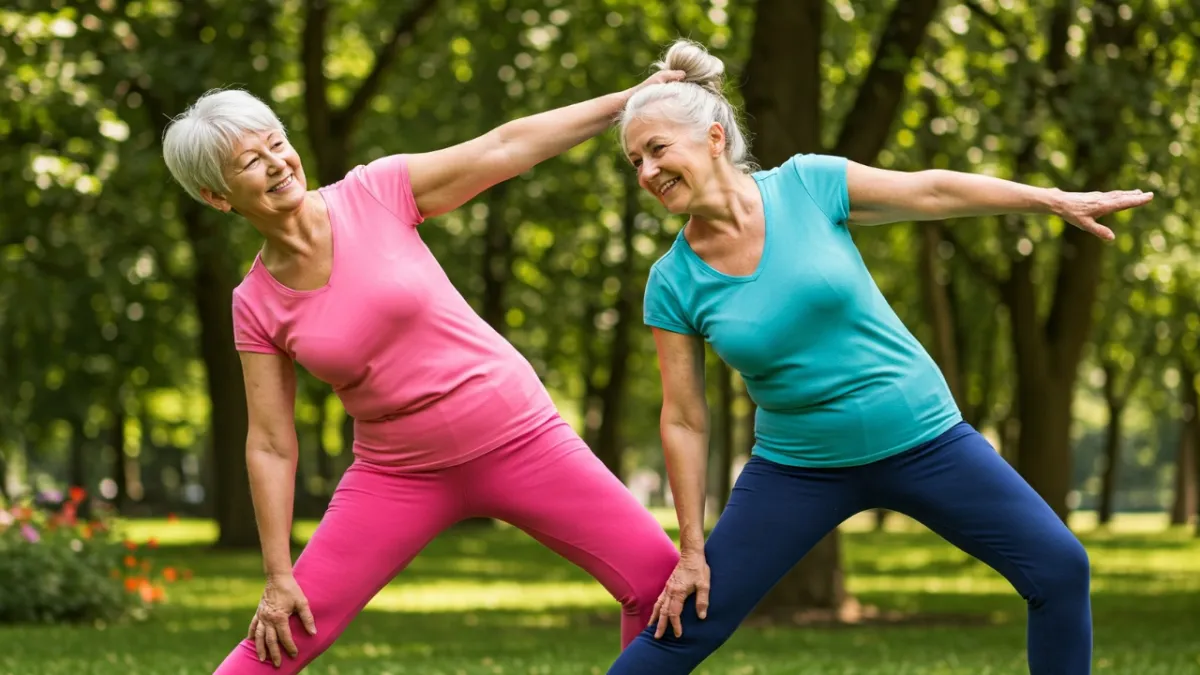
No-Gym Senior Exercises at Home | Safe, Simple Routines for Balance & Strength
Want to stay active, steady, and confident without joining a gym or buying gadgets? You can. These safe, simple routines are designed for seniors and require no special equipment—just a chair and a little space at home.
Visit Get More Life in Your Years for more simple, evidence-based guidance.
Why “No-Equipment” Works After 50
Low friction = consistency. When it’s easy to start, you’ll actually do it.
Joint-friendly. Simple movements at a comfortable pace reduce strain.
Real-life strength. We focus on getting up, reaching, stepping, and staying balanced—skills you use every day.
Aim for 5–15 minutes, most days. Consistency beats intensity.
The 10-Minute “Everyday Strength & Balance” Routine
Move within comfort. Hold a chair or countertop for support as needed. Stop any move that causes pain.
Ankle Rocking (heel–toe) – 45s
Loosens ankles, boosts circulation for steadier steps.Sit-to-Stand (from chair) – 45s
Builds leg strength for stairs and getting up safely.
Easier: Use hands lightly on the chair. Harder: Slow down the lowering.Seated Cat–Cow (spine roll) – 45s
Eases back stiffness; improves posture and comfort.Wall Shoulder Slides – 45s
Keeps shoulders moving for reaching and dressing.March in Place (light) – 60s
Warms hips and core; improves coordination.Tandem Stand (heel-to-toe) – 2 × 30s each side
Trains balance. Stand near support; look ahead, breathe slowly.Box Breathing (4-4-4-4) – 1 minute
Calms the nervous system; supports steady blood pressure.
That’s it—no equipment, no fuss. Do this most mornings and you’ll likely feel looser, taller, and more confident.
A Gentle Weekly Plan (No Gym Needed)
Mon / Thu — Mobility & Balance (the 10-minute routine)
Tue / Sat — Strength Focus
Sit-to-Stand 3×6–8
Counter Push-Ups 3×6–8
Standing Calf Raises 2×10–12
Wed — Easy Walk (10–20 minutes, comfortable pace)
Sun — Reset Day (light stretching + breathing)
Keep reps smooth and controlled. You should finish feeling better, not exhausted.
Common Mistakes to Avoid
Going too fast. Slower, controlled moves train balance and joint control.
Holding your breath. Exhale on effort; breathe through the nose when possible.
Ignoring discomfort signals. Adjust the range or skip a move if something feels off.
Doing too much, then stopping. Small steps, done often, win every time.
Quick Balance Self-Check (Home)
Stand near a counter. Try single-leg stand for up to 10 seconds each side. Use fingertip support if needed.
If it’s shaky: practice tandem stand daily.
If it’s easy: try eyes-forward, then gently turn your head left/right while standing.
FAQ
Do I need any equipment?
No—just a sturdy chair and a bit of space.
How long until I notice a difference?
Many people feel looser and steadier within 2–3 weeks of short, regular sessions.
What if I have old injuries or joint issues?
Work within comfort, keep movements small and controlled, and build up gradually. If you’re unsure, consult your GP.
I’m not tech-savvy—can I follow along?
Yes. Our approach uses clear, printable guides and simple videos with one easy link.
Ready for a Simple Plan That Sticks?
If you want more guidance without gym memberships or gadgets, our programmes are online, step-by-step, and designed for seniors—so you can build strength, balance, and confidence at home.
👉 Start here: Get More Life in Your Years — Home
